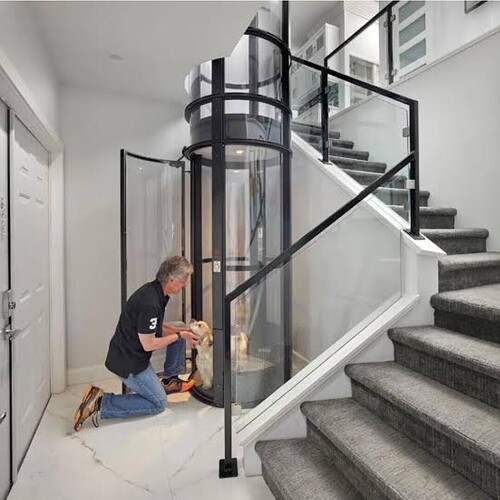As more homeowners plan to age in place or accommodate family members with mobility needs, accessibility renovations are becoming increasingly important. Among the most transformative upgrades is the installation of a home elevator. Once seen as a luxury addition, residential elevators are now a practical solution that enhances convenience, safety, and property value.
Why Consider a Home Elevator?
Multi-story homes often present challenges for individuals with mobility issues. Stairs can become a barrier, limiting access to upper levels or creating safety risks. A home elevator removes this obstacle, making the entire house more functional and inclusive. Even for families without mobility concerns, elevators add convenience when moving groceries, luggage, or heavy items between floors.
Design Options
Modern home elevators come in a variety of designs, from compact shaftless models that fit into tight spaces to larger, wheelchair-accessible versions. Styles range from sleek glass cabins that showcase contemporary design to traditional wood-paneled elevators that blend with classic interiors. Many systems are customizable, allowing homeowners to choose finishes, doors, and control panel styles that complement their décor.
Installation Considerations
Installing an elevator requires careful planning. Traditional elevators need a shaft, which may involve significant construction, especially in existing homes. However, newer shaftless and pneumatic models offer easier installation with less structural modification. Homeowners should work with certified contractors to assess weight capacity, safety features, and the best location for installation—often near staircases or in unused corners.
Accessibility Beyond Elevators
While elevators are a major upgrade, other accessibility renovations can also make a big difference. Stairlifts, widened doorways, zero-threshold showers, and slip-resistant flooring all improve safety and usability. These upgrades not only support older adults but also benefit families with young children, reducing accident risks.
Costs and Long-Term Value
The cost of a home elevator varies widely depending on size, technology, and construction requirements. While installation can be a significant investment, it often pays off in the long run. Accessibility upgrades improve resale appeal, particularly in markets with aging populations. In some cases, grants or tax incentives may help offset costs for homeowners making accessibility improvements.
Maintenance and Safety
Residential elevators are designed with safety in mind, featuring emergency stop functions, backup power, and sensors to prevent accidents. Regular maintenance ensures smooth operation and prolongs the system’s lifespan. Compared to commercial elevators, home models are compact, quiet, and energy-efficient.
Final Thoughts
Home elevators and accessibility upgrades are more than just conveniences—they’re investments in independence, safety, and long-term living. As housing trends shift toward inclusivity, these renovations are becoming increasingly common. Whether for aging in place, assisting family members, or simply adding modern convenience, accessibility-focused upgrades make homes more functional and welcoming
for everyone.

